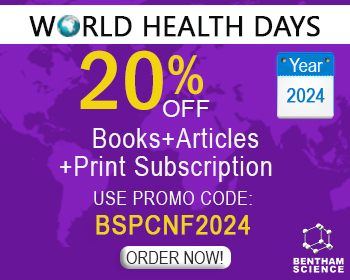Abstract
Skin cancers are one of the most widespread and complex forms of the disease, resulting in very high mortality rates across the world. The current treatments available for skin cancer include chemotherapy, surgery, radiotherapy, etc. The selected treatment options for skin cancer are usually decided based on the condition of a patient and the type of skin cancer. The effectiveness of skin cancer therapy is still limited because of poor penetrability of the drug into stratum corneum or lesions, low efficacy, required higher concentration of the active pharmaceutical ingredients to reach a therapeutic effect. Besides, low bioavailability at the site of action, the requirement of high dose, causes skin irritation, which significantly hinders the drug absorption through the stratum corneum. Thus, nanocarriers have been used to bypass the problems associated with conventional anti-cancer drug delivery systems. In the current scenario, nanotechnology-based therapy has shown great potential in the management of skin cancer, and these can be used for a more efficient drug delivery system to treat cancers. In this review article, the information on different nanocarrier systems for skin cancer has been elucidated. Moreover, the various nanoparticulate strategies and their effectiveness to treat skin cancer have been discussed.
Keywords: Nanocarriers, skin, cancer, targeted drug delivery, topical drug delivery, dermatology.
[http://dx.doi.org/10.1080/10717540500455975 ] [PMID: 16556569]
[http://dx.doi.org/10.1517/17425247.2012.686490 ] [PMID: 22559240]
[http://dx.doi.org/10.1155/2011/380371]
[http://dx.doi.org/10.1155/2014/895986]
[http://dx.doi.org/10.1080/21691401.2017.1366333 ] [PMID: 28830262]
[http://dx.doi.org/10.4155/tde-2020-0034 ] [PMID: 32349643]
[http://dx.doi.org/10.1142/S1088424619300192]
[http://dx.doi.org/10.1155/2014/895986]
[http://dx.doi.org/10.1007/s40005-018-00418-8]
[http://dx.doi.org/10.1007/s40204-017-0064-z ] [PMID: 28303522]
[http://dx.doi.org/10.2217/nnm.10.117 ] [PMID: 21128721]
[http://dx.doi.org/10.1016/j.canlet.2014.11.001 ] [PMID: 25444899]
[http://dx.doi.org/10.1111/j.1755-148X.2009.00581.x ] [PMID: 19493316]
[http://dx.doi.org/10.1111/j.1468-3083.2009.03100.x ] [PMID: 19175703]
[http://dx.doi.org/10.1016/j.ejps.2008.05.002 ] [PMID: 18572392]
[http://dx.doi.org/10.1016/j.drudis.2011.09.015 ] [PMID: 21983329]
[http://dx.doi.org/10.2147/IJN.S124701] [PMID: 29593389]
[http://dx.doi.org/10.3109/10717544.2014.976891 ] [PMID: 25379805]
[http://dx.doi.org/10.1080/20022727.2017.1325708 ] [PMID: 30410704]
[http://dx.doi.org/10.1517/17425247.3.6.727 ] [PMID: 17076595]
[http://dx.doi.org/10.1021/acsnano.8b03800 ] [PMID: 30183253]
[http://dx.doi.org/10.1016/j.ijpharm.2010.06.034 ] [PMID: 20599487]
[http://dx.doi.org/10.3390/molecules13081551 ] [PMID: 18794772]
[http://dx.doi.org/10.3109/10717544.2014.902146 ] [PMID: 24735246]
[http://dx.doi.org/10.1097/CAD.0b013e328346c7d6 ] [PMID: 21799471]
[http://dx.doi.org/10.1016/j.ijpharm.2006.05.027 ] [PMID: 16806755]
[http://dx.doi.org/10.1016/j.ejps.2011.07.003 ] [PMID: 21782942]
[http://dx.doi.org/10.1016/j.ijpharm.2009.10.011 ] [PMID: 19833178]
[http://dx.doi.org/10.1016/j.ijpharm.2007.05.061 ] [PMID: 17644288]
[http://dx.doi.org/10.1016/j.ejpb.2011.03.008 ] [PMID: 21402157]
[http://dx.doi.org/10.1007/s12094-012-0982-0 ] [PMID: 23344664]
[http://dx.doi.org/10.1016/j.cis.2006.05.014 ] [PMID: 16843424]
[http://dx.doi.org/10.1016/j.foodhyd.2015.07.025]
[http://dx.doi.org/10.1021/bc0501855 ] [PMID: 16536456]
[http://dx.doi.org/10.1016/j.jconrel.2012.09.014 ] [PMID: 23041274]
[http://dx.doi.org/10.1016/j.ijpharm.2010.02.004 ] [PMID: 20153414]
[http://dx.doi.org/10.1016/j.jconrel.2020.02.020]
[http://dx.doi.org/10.3109/09687688.2010.522203 ] [PMID: 21028936]
[http://dx.doi.org/10.1016/j.ijpharm.2013.12.044 ] [PMID: 24378329]
[http://dx.doi.org/10.1159/000056328 ] [PMID: 11174085]
[http://dx.doi.org/10.3109/1061186X.2012.716845 ] [PMID: 22931500]
[http://dx.doi.org/10.4161/derm.1.4.9501 ] [PMID: 20592791]
[PMID: 23293516]
[http://dx.doi.org/10.3109/03639045.2016.1151028 ] [PMID: 26850463]
[http://dx.doi.org/10.1080/10717544.2016.1194498 ] [PMID: 27240935]
[http://dx.doi.org/10.3109/1061186X.2014.965717 ] [PMID: 25268273]
[http://dx.doi.org/10.1080/02652048.2016.1200150 ] [PMID: 27338131]
[http://dx.doi.org/10.2147/IJN.S117511 ] [PMID: 27785014]
[http://dx.doi.org/10.3109/10717544.2016.1165310 ] [PMID: 26978275]
[http://dx.doi.org/10.3390/pharmaceutics9040037 ] [PMID: 28934172]
[http://dx.doi.org/10.3390/scipharm87030017]
[http://dx.doi.org/10.3109/10717544.2013.868557 ] [PMID: 24350612]
[http://dx.doi.org/10.1111/jdv.16357] [PMID: 32196772]
[http://dx.doi.org/10.1039/C8RA08088G]
[http://dx.doi.org/10.1039/C7RA07573A]
[http://dx.doi.org/10.1016/j.carbon.2016.12.020]
[http://dx.doi.org/10.1186/s12951-019-0525-8 ] [PMID: 31451110]
[http://dx.doi.org/10.1016/j.actbio.2015.08.027 ] [PMID: 26297888]
[http://dx.doi.org/10.1016/j.carbon.2019.12.002]
[http://dx.doi.org/10.1111/cpr.12786 ] [PMID: 32301195]
[http://dx.doi.org/10.1371/journal.pone.0220210 ] [PMID: 31344086]
[http://dx.doi.org/10.1016/j.snb.2014.02.066]
[http://dx.doi.org/10.1021/nn305559j ] [PMID: 23363247]
[http://dx.doi.org/10.2147/IJN.S45407 ] [PMID: 23843694]
[http://dx.doi.org/10.1016/j.biomaterials.2013.12.079 ] [PMID: 24424208]
[http://dx.doi.org/10.3390/molecules21111585 ] [PMID: 27879628]
[http://dx.doi.org/10.1039/C6RA14693G]
[http://dx.doi.org/10.4155/tde-2017-0091 ] [PMID: 29125060]
[http://dx.doi.org/10.1016/B978-0-12-816963-6.00011-X]
[http://dx.doi.org/10.1007/s10928-019-09621-y ] [PMID: 31004315]
[http://dx.doi.org/10.2174/1389450120666191031092259 ] [PMID: 31670619]
[http://dx.doi.org/10.1039/c2sm07280g]
[http://dx.doi.org/10.15171/apb.2018.063 ] [PMID: 30607327]
[http://dx.doi.org/10.1016/S0168-3659(03)00200-1 ] [PMID: 12880700]
[http://dx.doi.org/10.1039/C5PP00126A ] [PMID: 26066768]
[http://dx.doi.org/10.1021/bm301719b ] [PMID: 23391096]
[http://dx.doi.org/10.3109/10717544.2013.845861 ] [PMID: 24134794]
[http://dx.doi.org/10.1039/C4NR05241B ] [PMID: 25436837]



























